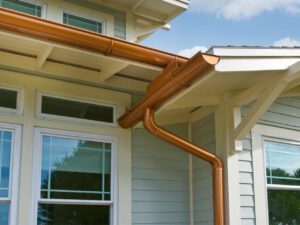Types of Gutters
What are Gutters? They are the channels and slats that collect surface water on buildings. Gutters are a vital part of your water discharge system and should be properly maintained. Contact Gutters to learn more about the purpose of Gutters. But for the sake of brevity, let’s look at some of the most common types. This way, you’ll have a better idea of the type of gutter you need to get your house in order.

If you’re building a new home, most homes come with gutters installed. If you’re installing them yourself, make sure you install them properly and connect downspouts away from your foundation. Flexible hose connectors can help you connect downspouts correctly. In general, gutters are included with a new house. In order to prevent water from backing up against your foundation, they need to be installed away from it.
There are two basic styles of gutters. Seamless gutters are formed entirely on-site and run the length of your roof. Because of performance issues related to thermal expansion, seamless gutters are recommended for homes that have a 50-foot roof. The shape of seamless gutters can vary. They can be rectangular or semi-circular in cross-section. They can also be curved, similar to crown molding. And you can paint them to match the trim on your building.
Properly installed gutters can be very effective in preventing hydrostatic pressure on your building’s foundation. This concentrated water can overflow dampproofing systems, causing structural damage. Gutters also reduce soil erosion below the foundation. Depending on the density of the soil under your home, the soil can change over time, causing your building to settle. Fortunately, most buildings are designed to withstand a certain amount of settlement, but overflowing gutters will make your house susceptible to disaster.
The first rain gutters appeared during the Indus Valley Civilization, which lasted from 3,000 BC to 1,500 BC. These ancient structures were comprised of clay bricks over drains. Later, the Roman Empire invented roadside drainage systems that allowed rainwater to flow into the gutters. In around 47 AD, the Roman Empire brought this civilization. Gutters were widespread during the Empire, which ruled from the 10th to the 13th century. They rebuilt many buildings with stone roofs and gargoyles.
In the Victorian era, gutters were increasingly common. Victorians recognized that gutters kept their walls dry. Then, during the Second Industrial Revolution, the popularity of gutters increased, and steel became the most popular material. Gutters were made easier to manufacture with new technologies during the Second Industrial Revolution. Metal rolling machines allowed builders to roll half-round steel gutters. These new methods made gutters more accessible and affordable to the average homeowner. However, some disadvantages of these gutters remained.
If you have a small yard, it is not a bad idea to use a garden hose to clean the gutters. This method can be effective for assessing the extent of gutter blockages. You can then dump the debris onto a drop cloth and inspect the entire system for leaks or debris. You can also use a leaf blower to blow the debris off the roof. But remember, it’s important to be safe when cleaning your gutters.
Your gutters are responsible for managing the water that falls on your roof. If the water does not flow properly, it can accumulate on the roof, damage the siding and landscape, and seep into the foundation. Gutters are incredibly important for your home, but too many homeowners ignore them until they notice problems. But it’s important to remember that gutters are important for the structural integrity of your home, and it’s better to have a good pair of gutters than an inferior roof.

